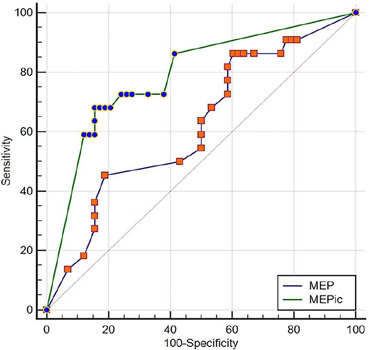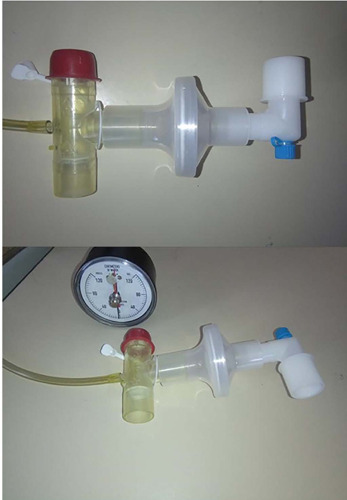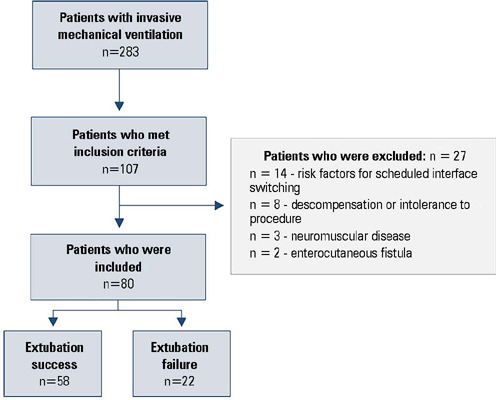Maximal expiratory pressure compared with maximal expiratory pressure during induced cough as a predictor of extubation failure.
引用次数: 0
Abstract
Objective To compare the diagnostic performance of maximal expiratory pressure with maximal expiratory pressure during induced cough for predicting extubation failure within 72 hours in patients who completed a spontaneous breathing trial (SBT). Methods The study was conducted between October 2018 and September 2019. All patients aged over 18 years admitted to the intensive care unit who required invasive mechanical ventilation for over 48 hours and successfully completed a spontaneous breathing trial were included. The maximal expiratory pressure was assessed with a unidirectional valve for 40 seconds, and verbal encouragement was given. The maximal expiratory pressure during induced cough was measured with slow instillation of 2mL of a 0.9% saline solution. The primary outcome variable was extubation failure. Results Eighty patients were included, of which 43 (54%) were male. Twenty-two patients [27.5% (95%CI 18.9 - 38.1)] failed extubation within 72 hours. Differences were observed in the maximal expiratory pressure during induced cough between the group who failed extubation, with a median of 0cmH2O (P25-75: 0 - 90), and the group without extubation failure, with a median of 120cmH2O (P25-75: 73 - 120); p < 0.001. Conclusion In patients who completed a spontaneous breathing trial, the maximal expiratory pressure during induced cough had a higher diagnostic performance for predicting extubation failure within 72 hours. Clinicaltrials.gov Registry: NCT04356625



最大呼气压与诱导咳嗽时最大呼气压的比较作为拔管失败的预测因子。
目的:比较自主呼吸试验(SBT)患者诱导咳嗽时最大呼气压与最大呼气压对预测72小时内拔管失败的诊断价值。方法:研究时间为2018年10月至2019年9月。所有年龄在18岁以上、需要有创机械通气超过48小时并成功完成自主呼吸试验的重症监护病房患者被纳入研究。用单向阀评估最大呼气压40秒,并给予口头鼓励。缓慢滴注2mL 0.9%生理盐水,测定诱导咳嗽时的最大呼气压。主要结局变量为拔管失败。结果:共纳入80例患者,其中男性43例(54%)。22例患者[27.5% (95%CI 18.9 ~ 38.1)]在72小时内拔管失败。拔管失败组诱导咳嗽时最大呼气压的中位数为0 cmh2o (P25-75: 0 - 90),未拔管失败组的中位数为120 cmh2o (P25-75: 73 - 120);P < 0.001。结论:在完成自主呼吸试验的患者中,诱导咳嗽时的最大呼气压在预测72小时内拔管失败方面具有更高的诊断性能。
本文章由计算机程序翻译,如有差异,请以英文原文为准。
求助全文
约1分钟内获得全文
求助全文

 求助内容:
求助内容: 应助结果提醒方式:
应助结果提醒方式:


